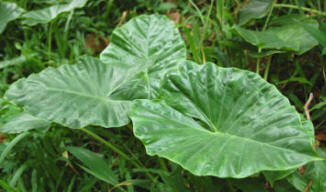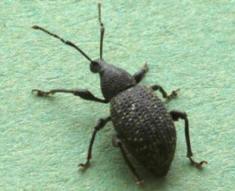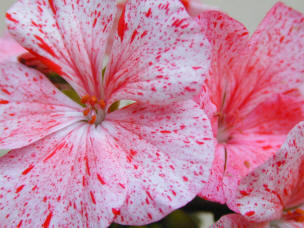Alocasia macrorrhiza - Elephant's Ear
Advice and information on how to look after the Alocasia Houseplant.
There are many different types of Alocasia - which we will be featuring during this update, but the one we refer to here best suits the common name for all Alocasias - "Elephant's Ear Plants" Superb, oversized, dark green leaves bearing white, or even reddish, veins. Sometimes referred as 'Upright' Elephant Ears because of the long stems that support the giant leaves. These stems can send the leaves 2m tall where they droop spectacularly - as do real Elephant's Ears!
The individual leaves can grow to a length of 3 feet+ (1.2m max) so very deserving of the common name.
Image of Alocasia Spp.- Elephant's Ears - Growing in natural habitat Indonesia.
Alocasia macrorrhyza is also known as the Giant Taro. It is widely grown in in SE Asia and other parts for its rhizomes and shoots. These parts are edible once cooked, but can cause stomach upset if any part of the plant is eaten un-cooked. Taro normally boiled or baked, before being used in sweet dishes and assorted goodies!
 Contact with cut areas and sap may cause skin irritation. All parts
of this plant will cause sever stomach upset if eaten.
Contact with cut areas and sap may cause skin irritation. All parts
of this plant will cause sever stomach upset if eaten.
Its needs: Draught-free, moderate light, but no direct sun. Good potting compost, open and well-drained - Addition of chipped bark or similar will help achieve this. Essentially. all of the Alocasia group need very high humidity - particularly in the growing season - so not at all easy to grow as a house plant.
It can however, be grown quite successfully under glass where good temperature and high humidity can be maintained.
As tempting as they look and are often wrongly described, Alocasia is not the ideal indoor plant - other then for a short time.
Care: This plant should be well-watered with a
feeding of high nitrogen
fertilizer to promote leaf-growth. Warmth and high humidity essential.
Good for: A feature plant, an ‘architectural specimen’, good in a
draught-free quiet area. There are even larger plants of this type,
including: Alocasia gigantean .
Propagation of Alocasia - Elephant's Ear Plant.
Additional plants may be gained by removing side shoots offsets and re-potting. Alternatively, in the dormant period, the rhizomes can be carefully divided or cut up with a sharp knife.
Problems with Elephant's Ear Plants.
High humidity which is necessary will be hard if not impossible to maintain in the normal household.
When grown under glass, the main pest will be mealybug, though brown scale insect may also be a problem. The other main houseplant pest being red spider mite, but will not be a problem thanks to the high humidity needed for cultivation.
Best Selling Gardening Products
Popular Gardening Sections

Problems
Identify Weeds in The Garden - How to deal with weeds. Diseases and Pest which harm your garden and plants, learn how to prevent, deter and erradicate your garden problems.
Garden Problems
Pruning
Pruning Guide. Shrubs flower better with correct pruning. Many illustrations and examples of what to do - and when. Includes evergreens, roses, flowering shrubs, spring flowering shrubs and pruning for stem effect. This is our most viewed and comprehensive section,
Pruning
Gardening Businesses
Gardening Businesses listed in the UK counties and USA states. County and State Listings of businesses involved in Garden supplies and services. If you wish to be added to the Directory, please send us your information. Having problems, use the search box
Businesses
Gardening
In this section you will learn about Gardening Basics, Containers, Landscaping, Propagation and Soil.
Gardening
Gardening Gifts
Gardening Gifts and Reviews, Read Before you Buy
- Gardening Gifts Ideas
- Gifts For Her
- Gifts For Men
- Power Tool Gifts
- Cheap Gifts
- Personalised Gifts
- Wildlife Gifts
- Family Gifts



